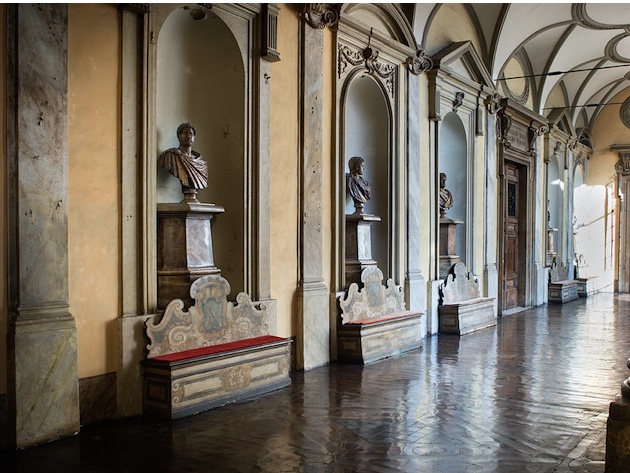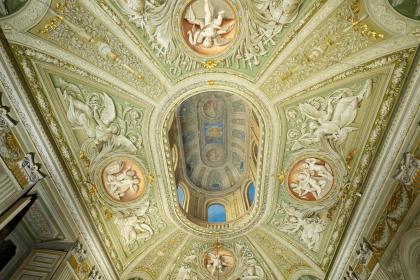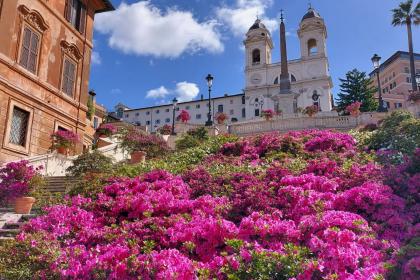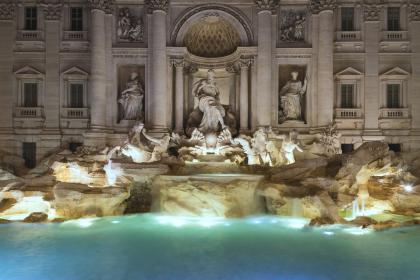
The palace was built in the mid-sixteenth century by the Jacobilli family who, having exhausted their resources even before having finished it, sold the palace, in 1583, to the Tuscan family of the Rucellai, who commissioned the Florentine architect and sculptor Bartolomeo Ammannati (1511- 1592) to complete the building. Ammannati created the façade on Via del Corso and built an elegant loggia overlooking the garden, whose gallery was frescoed by Jacopo Zucchi in those years and enriched with the collection of ancient sculptures of the Ruccellai princes.
In 1629 it was purchased by the Caetani, who, in the following year, commissioned Bartolomeo Breccioli to modify the façade on largo Goldoni, adding the windows to the right of the sixteenth-century ashlar portal and also abolishing the mezzanine, which was transformed into a second floor. Around 1640 the Lombard architect Martino Longhi the Younger (1602-1656) built the majestic staircase of over one hundred steps that rises from the portico to the loggia overlooking the internal courtyard, considered one of the four wonders of Rome and the belvedere tower above the roof. In 1776 the building passed to the Ruspoli, who are still partly owners today. The building has large three-storey façades with architraved windows on the first, a triangular tympanum on the second and a simple frame on the third; the corners have rusticated edges.
Many famous personalities stayed in the palace, such as the German composer Georg Friedrich Händel who composed the oratorio The Resurrection here and who was choirmaster for the Ruspoli princes; the former queen of Holland, Napoleon Bonaparte's stepdaughter Ortensia, with her two sons, one of whom became Napoleon III, emperor of the French.In 1812 the building, especially the ground floor apartment, housed the "Caffè di Bagnoli" known as "Caffè Nuovo", frequented by the best society of the nineteenth century.
Today the prestigious building is the seat of the Memmo Foundation and hosts important exhibitions.
Photo credits: Courtesy of Ruspoli palace official site
The Doria-Pamphilj Gallery

 Condividi
Condividi
Piazza di Spagna

 Condividi
Condividi
The Trevi Fountain

 Condividi
Condividi
The most famous of the Roman fountains: a jewel of water and stone
Information
The Palazzo is a private seat. Only the first floor can be seen during temporary exhibitions.
 Condividi
Condividi
Location
To find out about all accessibility services, visit the Rome accessible section.











































